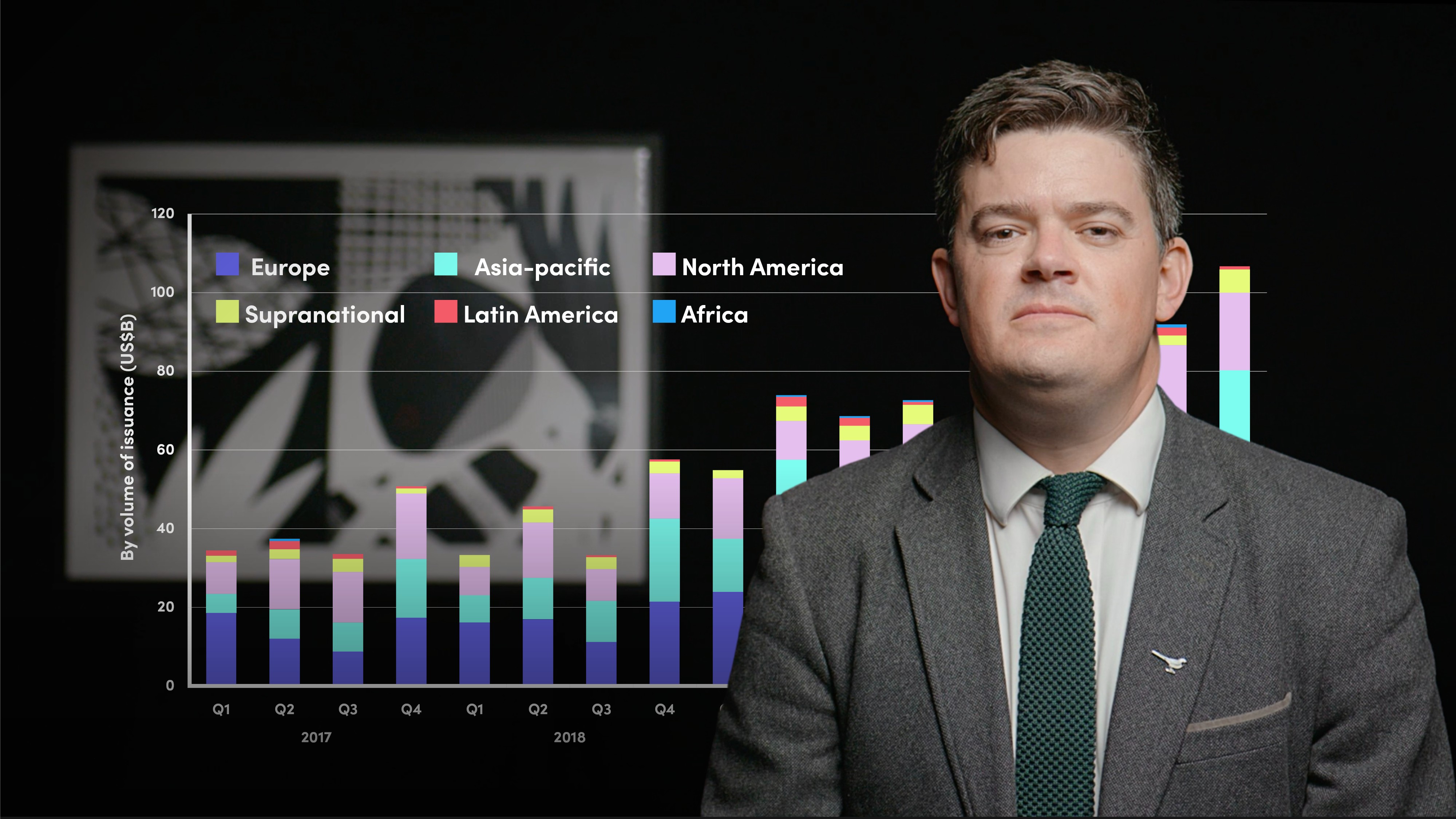
Why Issue ESG-labelled Bonds?

Angel Beltran
10 years: Sustainability Bonds
In this video, Angel Beltran covers the increasing take-up of ESG-labelled debt in capital markets. He also compares these with conventional bonds and then covers the different types of ESG-labelled bonds and their requirements.
In this video, Angel Beltran covers the increasing take-up of ESG-labelled debt in capital markets. He also compares these with conventional bonds and then covers the different types of ESG-labelled bonds and their requirements.
Subscribe to watch
Access this and all of the content on our platform by signing up for a 7-day free trial.

Why Issue ESG-labelled Bonds?
6 mins 55 secs
Key learning objectives:
Outline the increasing growth of ESG-labelled bonds globally
Understand the considerations that issuers make regarding ESG-labelled bonds as opposed to conventional bonds
Overview:
Environmental, social, and governance (ESG)-labelled bonds represent a significant and growing portion of the debt capital markets. It is important to compare them with conventional bonds and understand why issuers and investors are both adopting these instruments.
Subscribe to watch
Access this and all of the content on our platform by signing up for a 7-day free trial.
How has the issuance of ESG-labelled bonds increased in the recent years?
EUR and GBP denominated ESG-labelled bonds in 2021 and 2022 make up about 30% of total issuances. With regards to the type of instrument, the majority are green bonds, which account for 58% of ESG issuances. Sustainability and social bonds make up 19% and 17% of ESG issuances, respectively, while sustainability-linked bonds, the newest format launched in 2019, only make up 6%. Europe is the leading region for ESG issuances, accounting for almost 50% of all ESG paper, followed by Asia Pacific with 20% and supranationals with 17%.
What are the factors that make conventional bonds still the preferred structure when raising debt?
Conventional bonds are still the preferred option for many issuers due to their proven investor base and greater flexibility. They are less affected by potential price increases, covenant defaults and penalties. Conventional bonds also suffer less reputational risks with regards to greenwashing.
What are some factors that make issuers opt for ESG-labelled bonds?
Despite the advantages of non-ESG bonds mentioned above - they lack many benefits that come with ESG bonds. ESG bonds offer a number of additional benefits. These include the ability to capitalise on growing demand from investors who are increasingly interested in tracking ESG metrics, the opportunity to demonstrate commitment to sustainability and social responsibility, and the potential to access lower-cost financing. However, issuers of ESG bonds must be prepared to meet certain requirements, such as transparent communication of their ESG strategy and risk management policies, specific use of proceeds and annual monitoring and reporting, and the possibility of increased pricing, penalties, or covenant default for not meeting impact targets.
Subscribe to watch
Access this and all of the content on our platform by signing up for a 7-day free trial.

Angel Beltran
There are no available Videos from "Angel Beltran"





























